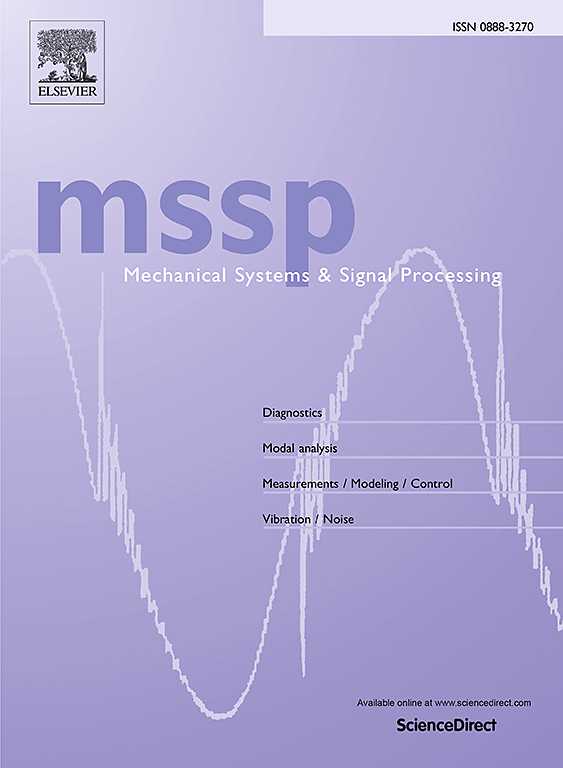利用组件模式合成和基于 FRF 的子结构,以数据为驱动识别挠性转移结构中的带隙
IF 7.9
1区 工程技术
Q1 ENGINEERING, MECHANICAL
引用次数: 0
摘要
本文章由计算机程序翻译,如有差异,请以英文原文为准。
Data-driven identification of bandgaps in flexural metastructures using Component Mode Synthesis and FRF Based Substructuring
Metastructures, characterized by their periodic unit cells, are known for their ability to block the propagation of elastic waves within specific frequency ranges, known as “bandgaps”. To estimate the wave propagation characteristics of these systems, two primary approaches are employed: physics-based methods and data-driven techniques. Physics-based methods depend on the material properties and geometry of the unit cells, while data-driven approaches utilize experimental data, such as steady-state dynamic response data.
This study assesses the effectiveness of data-driven techniques, particularly Component Mode Synthesis (CMS) and Frequency Response Function-Based Substructuring (FBS), in identifying bandgaps in metastructures composed of multiple unit cells. The focus is on metastructures consisting of 1D beams that exhibit flexural wave behavior. Within these structures, two significant challenges arise when using frequency response functions based on out-of-plane response data: the absence of rotational degrees of freedom (dofs) and the presence of rigid-body modes. Both factors critically impact the dispersion relationship and, by extension, the bandgap estimation. Traditionally, capturing rotational dynamics has been difficult due to limitations in direct experimental measurement, necessitating the inference of rotational dofs from translational measurements. Furthermore, rigid-body modes are estimated from experimental data. To overcome these challenges, we propose the estimation of rotational dofs by curve-fitting of translational dofs. In addition, this study explores a novel approach to the estimation of rigid body modes from the modal parameters acquired using the well-known Polymax algorithm. The discussed methodologies are also applied to derive dispersion relations for infinite metastructures.
求助全文
通过发布文献求助,成功后即可免费获取论文全文。
去求助
来源期刊

Mechanical Systems and Signal Processing
工程技术-工程:机械
CiteScore
14.80
自引率
13.10%
发文量
1183
审稿时长
5.4 months
期刊介绍:
Journal Name: Mechanical Systems and Signal Processing (MSSP)
Interdisciplinary Focus:
Mechanical, Aerospace, and Civil Engineering
Purpose:Reporting scientific advancements of the highest quality
Arising from new techniques in sensing, instrumentation, signal processing, modelling, and control of dynamic systems
 求助内容:
求助内容: 应助结果提醒方式:
应助结果提醒方式:


